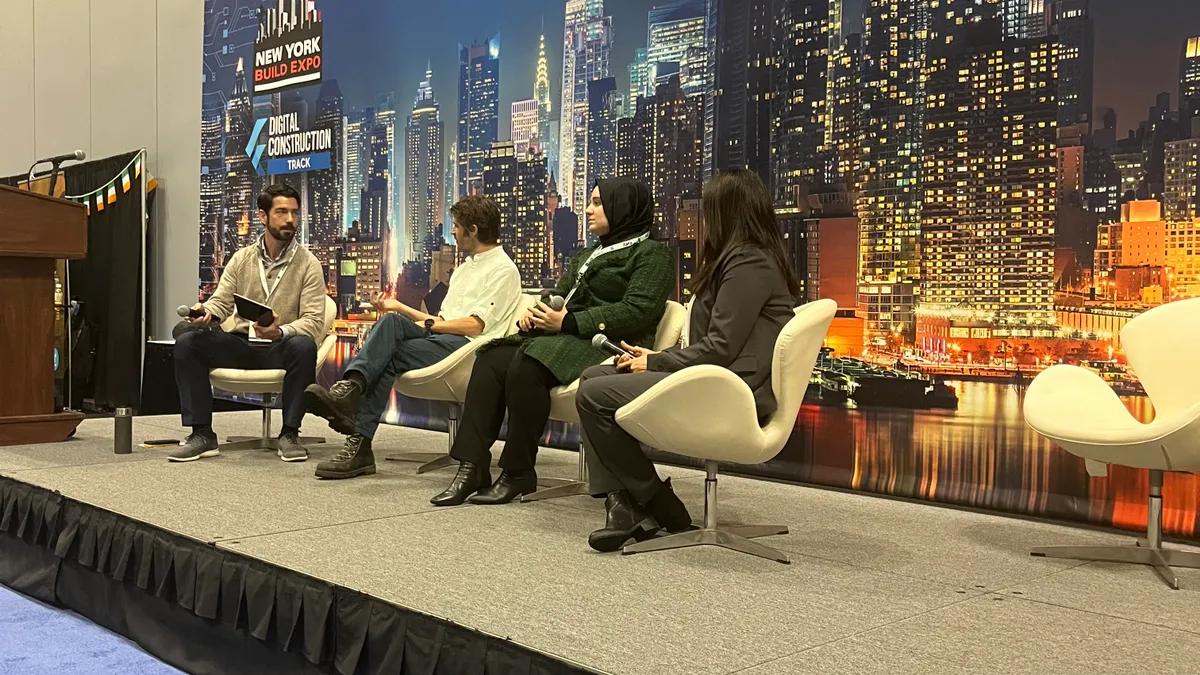The construction industry is in the midst of a labor shortage, and industry associations and employers have been struggling with ways to fill those skills gaps. A decrease in employment demand in other industries and higher wages have resulted in increased construction employment numbers over the last several months, but companies still cite shortages as a hurdle to progress on projects. In addition, industry experts agree that over the next 10 years, as a large segment of the construction workforce contemplates retirement, new blood will be vital to keep the industry from stalling.
Career tech programs
That’s where high school career and technical training comes into the picture, but don’t let Mandy Mayberry, communications and marketing director for Autry Technology Center in Enid, OK, hear you refer to it as "vo-tech."
"Here in Oklahoma we’re a part of what we call the CareerTech system. We’ve been trying to get away from that vo-tech stereotype of ‘I’m not going to college. I’m going to go to CareerTech because I don’t have any other choices.’ That’s something we’re getting away from" Mayberry said.
Autry is just one of 29 technical centers serving Oklahoma’s 400 school districts, and it trains students from 10 feeder schools in the Enid and surrounding areas. High school juniors and seniors can split their day between Autry and their assigned public high schools, but the training center is also open free of charge to any high school-aged student in the district. Autry’s programs are available to adults as well, although they pay a fee to attend one of its 25 career programs.
Mayberry said Autry boasts a 94% placement rate, meaning that students enter the workforce after graduation, continue on to post-secondary educational programs or enlist in the military. Autry allows their high school graduates to attend three additional years tuition-free.
"There are huge benefits of getting the students connected with us. They’re feeding to careers, and it’s just a matter of making sure that they’re getting the resources of those opportunities available to them," she said.
Connecting with the community
Jeff Clark, construction technology instructor at Autry, said he hears from the school’s advisory board, comprised of local business and industry leaders, exactly where the need for skilled construction workers is highest and has the latitude to tweak his program accordingly.
"They’ll tell me, 'We need more framers. We need more trim people.' Then I focus the program in that direction a little bit," Clark said. "Then they help me, because I go back to them and say, 'I have 20 students graduating this year. I need some jobs,' and instantly they’ll have jobs."
Sean Lynch, legislative and public affairs manager for the Association for Career & Technical Education, said Autry’s collaboration with the business community and local industry is a vital component to the school’s successes.
"It’s great when they have those feedback loops set up," Lynch said. "It just makes the whole system tighter."
"I think that the business and industry community has really become more astutely aware of the fact that CTE (career and technical education) programs are really closely tied to the fields that they’ve got these big shortages in, so they’re looking to CTE as a solution to this problem that is causing really big challenges in their businesses," he said.
A lack of federal funding
ACTE’s goal is to raise awareness around and appreciation for CTE programs and to advocate for increased federal funding, which has, surprisingly, in an environment of such high skilled-worker demand and a resurgence of interest in CTE, been flat or in decline in recent years, according to Lynch.
"There’s always a real need for investment in our career programs," he said. "There’s a growing interest among parents and business leaders and everybody else, and CTE programs are being asked to do more with less, and that’s a real challenge for them."
Lynch said the primary federal funding vehicle for CTE programs is the Carl D. Perkins Vocational and Technical Education Act, which has been the subject of ongoing reauthorization talks "because there’s a number of technical fixes that would make Perkins run more smoothly for teachers and students."
"There’s increased attention at the federal level," Lynch said, "and people are getting excited. There’s more interest in doing things to strengthen the CTE system, but, ultimately, we do need a stronger federal investment if we’re really going to make a dent in this issue."
Earlier this month, the Associated General Contractors of America, along with more than 300 other industry organizations and private companies, and in line with its Workforce Development Plan, called on Congress to increase funding for the act and to make the necessary reforms to enable a greater flow of young workers into the construction industry.
"With the construction industry expanding at rates not seen since the downturn, public officials need to make sure we are encouraging and preparing students to consider high-paying careers in construction," said AGC CEO Stephen E. Sandherr in a statement regarding December’s construction employment numbers.
Programs aim to keep students interested
Nevertheless, the staff at Autry continues seek interesting ways to pique student interest in a construction industry career.
Clark said he introduces students to local construction business leaders, who often take a personal interest in seeing students succeed, and the staff of Autry itself is frequently an inspiration as well.
"All the instructors are professionals in their careers," Clark said. "When the students see me, they don’t see someone that’s real negative in life. They see a very positive life, a lifestyle they want to achieve."
Clark said one group activity that is particularly motivating for Autry’s construction technology students is their annual house project. The students build a house from the ground up, and the school auctions it off at the end of the year. If a high school student attends Autry for a full two-year program, he or she will have participated in the construction of two houses before graduation.
"The students love it," Clark said. "The night of the auction, the students show up and show their grandparents and their parents. They take a lot of pride because they worked on the house. They remember the day that it was hot, and we were out framing, or the days that it was cold. It kind of gives them a connection."
Mayberry said exposure to a wide variety of construction trades during the course of the project allows students to develop an affinity for a particular aspect of the trades.
"They really evolve and find an interest in specific areas," she said."I recently interviewed one of our students, and he loved working on the cabinetry and the woodwork. He now knows that he wants to build his career around that woodwork, maybe in custom cabinetry."
"Those programs are always so great," Lynch said, "because they often incorporate an emphasis on entrepreneurship and the sales and marketing side of things. Students can learn how they would go about selling that house that they just built, and they also get involved with their community because those houses get sold to community members, and that’s always a great thing too."
What's ahead for career tech
Lynch and Mayberry agree that one of the tasks ahead for the CTE industry is to dispel the stigma that still exists regarding the choice to pursue technical career training rather than a college path.
"I think that for a long time, a four-year degree was viewed as the only way to be successful and anything less was less," Lynch said. "I think that mindset has definitely evolved, and people have taken a look at what might have been leaving out of the picture. These options offer students great opportunities, and oftentimes the fields that are available through CTE training are the ones that are in such high demand. I see some of the stats about what a person can earn welding these days and it is significant."
Mayberry said she believes that getting young people to understand the salary potential and the plethora of future career training opportunities available to them, all without incurring crippling student debt, is key, particularly in the face of skilled worker shortages.
"I passionately believe that CareerTech is the solution to filling that skills gap," she said. "That employee certification training — that’s what employers need, and that’s what business and industry is looking for."





















